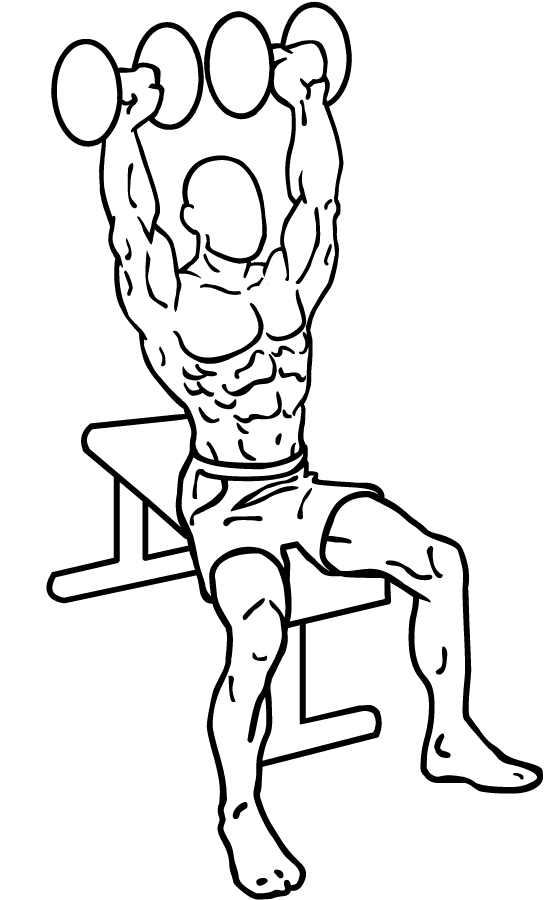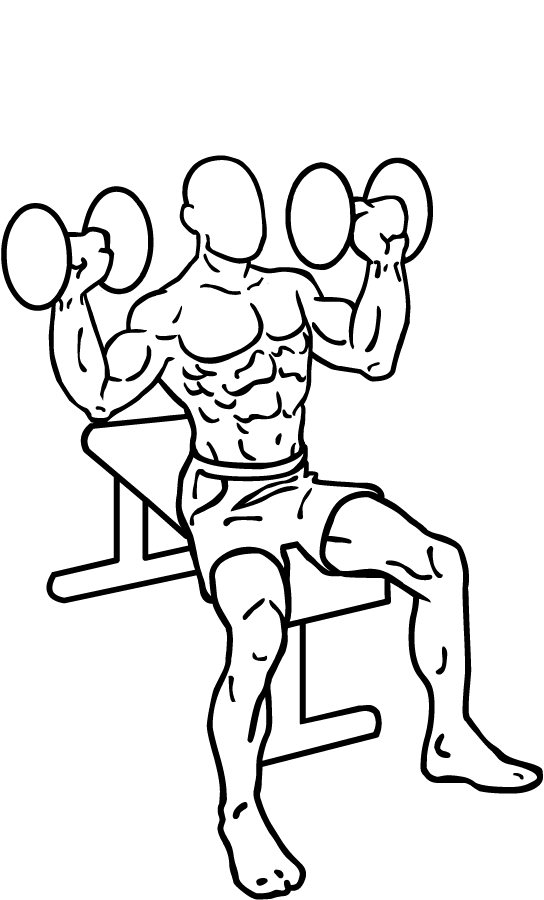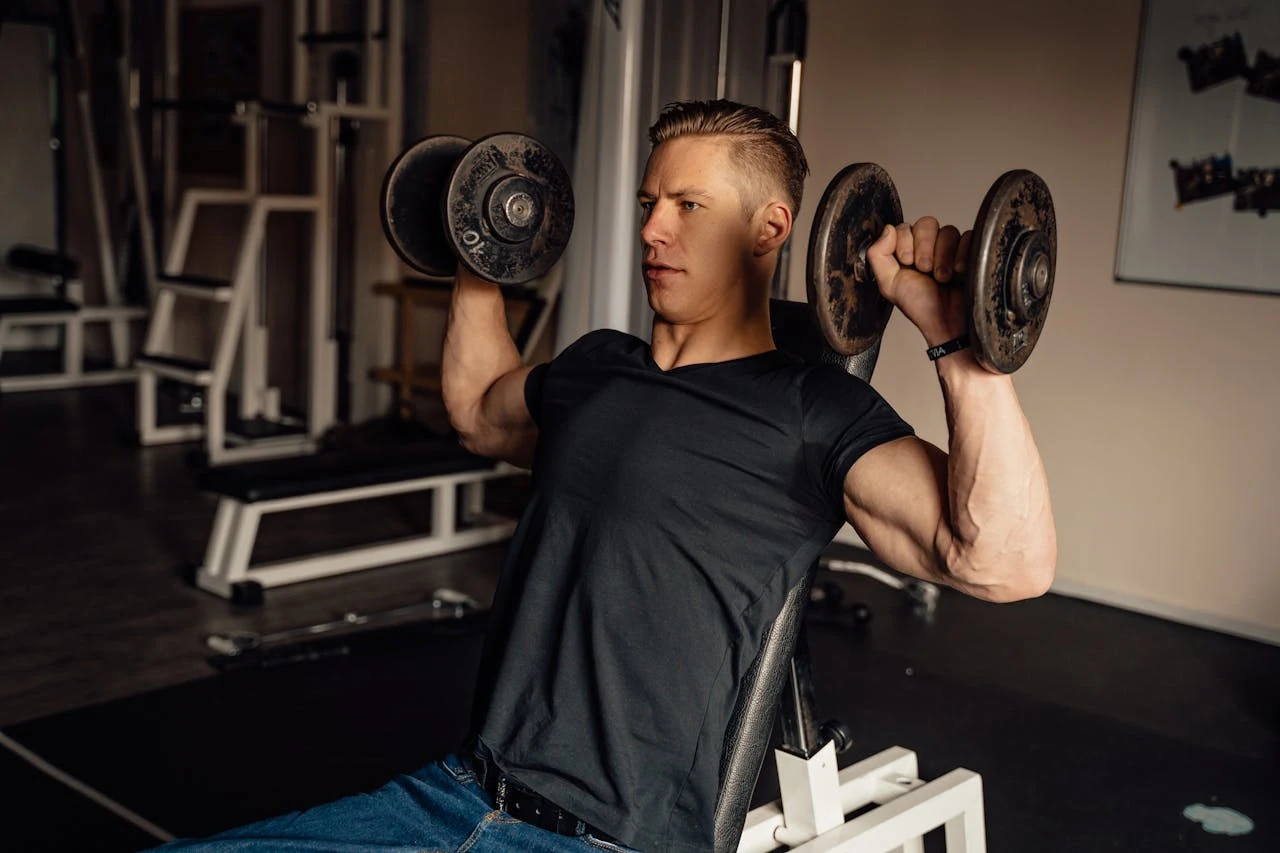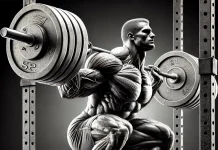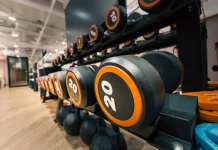Last Updated on November 21, 2024
The Dumbbell Shoulder Press is a cornerstone exercise for anyone looking to build upper body strength, particularly in the shoulders, chest, and triceps. It’s a powerful and versatile movement that not only strengthens the muscles but also improves overall upper body functionality, posture, and stability. Whether you’re new to strength training or an experienced lifter, the Dumbbell Shoulder Press should be a key component in your workout regimen.
In this blog post, we’ll take a deep dive into the Dumbbell Shoulder Press—breaking down the technique, muscles worked, variations, and how to make the most of this classic exercise.
Why the Dumbbell Shoulder Press?
The Dumbbell Shoulder Press is one of the most effective exercises for developing strong, defined shoulders. Unlike other shoulder exercises, using dumbbells allows for a greater range of motion and more balanced muscle engagement, as each arm works independently. Here’s why this movement is essential:
- Strengthens Multiple Muscle Groups: While the primary focus is on the deltoids (shoulders), the Dumbbell Shoulder Press also recruits the chest, triceps, and upper back muscles to provide stability and control. This makes it a compound movement, engaging multiple muscles at once and providing a full upper-body workout.
- Improves Shoulder Mobility and Stability: By pressing the dumbbells overhead, you’re working through a complete range of motion, which helps improve shoulder flexibility and mobility. This is crucial for reducing the risk of injury in other exercises, such as the bench press or overhead squats.
- Enhances Posture and Upper Body Balance: As you strengthen your shoulders and upper back, you’ll notice improvements in posture. Good posture is not only aesthetically pleasing but also essential for avoiding back and neck strain in daily activities and workouts.
- Dumbbell Flexibility: Unlike barbell presses, which lock your hands in a fixed position, dumbbells allow for greater freedom of movement, reducing stress on the shoulder joints. This flexibility makes it an ideal exercise for individuals with shoulder discomfort or those looking to avoid injury.
Muscles Worked by the Dumbbell Shoulder Press
The Dumbbell Shoulder Press works a variety of muscles, providing a balanced approach to upper-body development:
- Deltoids (Shoulders): The deltoid muscle is made up of three heads—anterior (front), lateral (side), and posterior (rear). The Dumbbell Shoulder Press primarily targets the anterior and lateral heads, building strength and size in these areas to create broader, more defined shoulders.
- Pectorals (Chest): Although this exercise is shoulder-focused, it also engages the upper part of the pectoral muscles (chest), especially when the arms move closer together at the top of the movement.
- Triceps: The triceps are worked hard during the pressing movement, as they are responsible for extending the arms at the elbow. This helps to build stronger, more toned triceps, which are important for supporting other pressing movements like push-ups and bench presses.
- Trapezius and Upper Back: The trapezius muscles, located in the upper back, help stabilize the shoulder blades and support the overhead press. These muscles are crucial for maintaining balance and preventing injury as you lift the dumbbells.
Step-by-Step Guide to the Dumbbell Shoulder Press
Equipment Needed:
- A pair of dumbbells: Choose weights that allow you to complete the exercise with good form. It’s better to start light and increase gradually as you gain strength.
- A sturdy bench with back support: Using a bench will help you maintain proper posture and avoid putting unnecessary strain on your lower back.
Starting Position:
- Sit Upright on a Bench: Begin by sitting on a bench with your feet flat on the floor, shoulder-width apart. Your back should be firmly pressed against the bench’s backrest to provide support throughout the movement.
- Grasp the Dumbbells: Hold a dumbbell in each hand with your palms facing forward. Start with your arms bent at a 90-degree angle, with your elbows positioned just below shoulder height. This is your starting position.
- Engage Your Core: Before you begin the press, draw your abs in and engage your core muscles to stabilize your torso. This will help prevent arching your lower back as you lift the weights overhead.
The Movement:
- Press the Dumbbells Up: Begin by pressing the dumbbells upward in a controlled motion. Your arms should extend fully but without locking out the elbows. Keep the dumbbells moving along a straight path, directly over your head.
- Bring Your Arms Together: As you reach the top of the movement, bring the dumbbells slightly closer together so that they almost touch. This movement will further engage your upper chest and stabilize your shoulders.
- Pause at the Top: Pause for a moment at the top of the movement, feeling the contraction in your shoulders, chest, and triceps.
- Lower the Dumbbells Slowly: In a controlled manner, lower the dumbbells back to the starting position. Your elbows should return to the 90-degree angle at shoulder height, ensuring that your muscles are engaged throughout the entire range of motion.
- Repeat: Perform the exercise for 8–12 repetitions, depending on your fitness level and the weight you’re using. Aim for 3–4 sets to maximize strength gains.
Common Mistakes to Avoid
The Dumbbell Shoulder Press is highly effective, but only if performed with proper form. Avoid these common mistakes to ensure you’re targeting the right muscles and preventing injury:
- Arching Your Lower Back: One of the most frequent errors is allowing the lower back to arch excessively, which can place undue strain on your spine. Always keep your core tight and your back pressed against the bench to avoid this.
- Using Too Much Weight: Lifting too heavy can lead to poor form, especially if you start to swing the weights or use momentum to push the dumbbells overhead. Start with lighter weights and gradually progress as your shoulder strength improves.
- Inconsistent Range of Motion: Some people tend to stop short on the lowering phase, which reduces the effectiveness of the exercise. Make sure to lower the dumbbells to the proper starting position (elbows at 90 degrees) to fully engage your shoulder muscles.
- Locking Out the Elbows: While pressing the weights overhead, avoid locking your elbows. This can transfer the tension from your muscles to your joints, increasing the risk of injury.
Variations of the Dumbbell Shoulder Press
To keep your workouts fresh and challenging, consider trying different variations of the Dumbbell Shoulder Press. Each variation targets the muscles slightly differently and helps prevent plateaus in your strength gains:
- Standing Dumbbell Shoulder Press: Perform the exercise standing instead of sitting. This variation engages your core muscles more as they work to stabilize your body throughout the movement. It’s a great option for building overall functional strength.
- Arnold Press: Named after the legendary bodybuilder Arnold Schwarzenegger, this variation starts with the palms facing your body at shoulder height. As you press the weights upward, rotate your hands so that your palms face forward at the top. This movement increases shoulder engagement and works the anterior deltoid more intensely.
- Single-Arm Dumbbell Shoulder Press: Pressing with one arm at a time helps improve balance and coordination while isolating each shoulder. This is a great variation if you want to focus on correcting any muscle imbalances between your left and right shoulders.
- Seated on Stability Ball: For an added core challenge, try performing the Dumbbell Shoulder Press while seated on a stability ball instead of a bench. This variation forces you to engage your core even more to maintain balance.
Incorporating the Dumbbell Shoulder Press Into Your Routine
The Dumbbell Shoulder Press is a versatile exercise that fits into various workout routines. Here’s how to integrate it depending on your fitness goals:
- Shoulder-Focused Day: If you’re dedicating an entire day to shoulder training, the Dumbbell Shoulder Press should be your primary movement. Combine it with lateral raises, front raises, and rear delt flyes for a comprehensive shoulder workout.
- Upper Body Days: On upper-body days, pair the Dumbbell Shoulder Press with compound movements like bench presses, rows, and push-ups to target all the major muscles of the upper body.
- Full-Body Workouts: For those who prefer full-body workouts, the Dumbbell Shoulder Press can be used alongside lower-body exercises like squats or lunges to ensure your shoulders and arms are getting enough attention.
- Supersets and Circuits: To maximize time and intensity, consider using the Dumbbell Shoulder Press in supersets (back-to-back exercises) with bicep curls, tricep dips, or other pressing movements.
The Dumbbell Shoulder Press is a foundational exercise for anyone looking to build strong, well-rounded shoulders, a toned chest, and powerful triceps. By mastering the proper form and incorporating it into your workout routine, you’ll not only develop strength but also improve shoulder mobility, balance, and posture.
Remember to start with lighter weights, maintain control throughout the movement, and focus on form before progressing to heavier loads. With consistency and dedication, the Dumbbell Shoulder Press will help you achieve impressive gains in your upper body strength and muscle definition.
Make sure to vary your routine by incorporating different press variations and combining the Dumbbell Shoulder Press with other upper-body exercises. This will keep your workouts exciting and ensure balanced muscle development.
So, grab those dumbbells, focus on your form, and get ready to press your way to stronger, more defined shoulders, chest, and triceps!
With consistent effort and the right techniques, the Dumbbell Shoulder Press will help you build a powerful upper body that supports your overall fitness goals. Remember, proper form is key, so always prioritize control over speed or weight. In time, you’ll notice improved strength, better posture, and increased shoulder mobility, which can enhance not only your gym performance but also your day-to-day activities.
Now that you’re armed with all the knowledge you need to master the Dumbbell Shoulder Press, it’s time to take action. Add it to your next workout, stay consistent, and watch your strength and muscle definition improve week after week.
